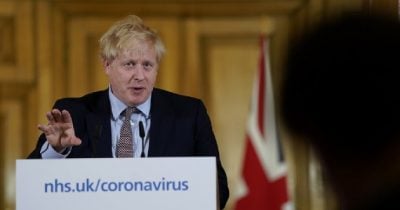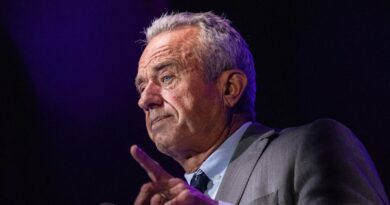Infectious Follies: Britain’s Freedom Day. Exit From Covid Restrictions?

He can scant resist a slogan, but UK Prime Minister Boris Johnson’s insistence on describing Britain’s exit from lockdown as Freedom Day came with its usual kitschy quality. All would be splendid as COVID-19 restrictions were lifted in the “move to step 4.” Social contact rules would be scrapped, along with mask mandates in various public spaces. Nightclubs could reopen; capacity limits for events and venues would be removed. There would be a return to social responsibility or what Johnson calls protection through informed choice.
According to the government, the decision to lift most restrictions on July 19 was reached because four tests had been satisfied. Ongoing vaccine deployment was proving a success, having “broken the link between infection and mortality.” (Step 4 had been delayed by a month to enable more adults to be vaccinated.) Gathered evidence showed that “vaccines are sufficiently effective in reducing hospitalisations and deaths in those vaccinated.” Infection rates did not pose a risk to a surge in hospitalisations that would place intolerable pressure upon the National Health System (NHS). The emergence of new COVID-19 variants did not pose a threat.
In his July 15 speech, Johnson accepted that hospitalisations and deaths would endure. A calculus of risk was at play. The days and weeks ahead would be “difficult” with “more hospitalisations and … more deaths but with every day that goes by we build higher the wall of vaccine acquired immunity, a wall that is now higher and stronger in this country than almost anywhere else in the world”.
The promise of Freedom Day had the effect of setting a good number of health professionals on edge. Arthur Hosie, a Staffordshire University microbiologist, took the view that the government was essentially disarming the populace from non-pharmacological protections. “This is a new virus to which we have had no exposure over previous years. Mask wearing and social distancing are important – to remove them is to remove the tools we need to live with the virus.”
Authors of a July piece for The Lancet, many members of the Independent Scientific Advisory Group for Emergencies, excoriated a strategy that still tolerated “natural infection for others (predominantly the young)” alongside a partially vaccinated population. “The link between infection and death might have been weakened, but it has not been broken, and infection can still cause substantial morbidity in both acute and long-term illness.”
The authors offered a range of grave scenarios. Unvaccinated children and young people risked being disproportionately affected. Schools faced high rates of transmission that would cause education disruption and endanger “clinically and socially vulnerable children.” Preliminary modelling data suggested that the opening up strategy “provides fertile ground for the emergence of vaccine-resistant variants.” The strategy would also deplete the country’s already exhausted health services and staff. Finally, and as has always been the case, deprived communities would continue to be disproportionately affected.
With these loud warnings come a rather troubling set of statistics. According to the Office of National Statistics one in 95 people in England has COVID. In Scotland, the number is one in 90. More than half a million people find themselves in isolation and infection levels lie at over 50,000 a day.
The Delta variant is also posing challenges to the wall of immunity Johnson has been promoting. Certainly, it does not promise to be impervious, though the figures are nonetheless impressive in preventing serious illness and hospitalisations. While the Pfizer vaccine does pack a punch in being 88% effective in stopping symptomatic disease arising from the Indian-origin strain, AstraZeneca’s offering comes in at 60%. Public Health England has put this down to an issue of timing, as the effectiveness of the latter vaccine requires a longer interval between first and second doses.
The country’s third COVID-19 wave is causing jolts of dysfunction, largely due to the test and trace system that continues to operate. Marks & Spencer is considering reducing opening hours to cope with staff shortages arising from infections and self-isolation directions. A number of factories and work sites face the prospect of shutting for similar reasons. Parts of the London Underground were closed because of the number of staff made to self-isolate after being notified via the NHS COVID-19 app. The Rail, Maritime and Transport union secretary Mick Lynch had predicted the previous week that the capital would face “a surge in workers pinged with self-isolation instruction next week.” A pingdemic is upon the population.
When Freedom Day came, it did not exactly arrive with a celebratory canter. It had a very Johnsonian air of ramshackle contradiction jammed with misrepresentation, confusion and even a sense of terror. Physician Gabriel Scally could recall no other “episode in history where a government has willingly aided and abetted the spread of a dangerous infectious disease among its own population.”
This was also freedom of a different sort. Hundreds of thousands of people are in mandated isolation; the Prime Minister is himself isolating after his health secretary, Sajid Javid, had tested positive for COVID-19 on Saturday. “For these people,” wrotea bleak Ross Clark for The Spectator, “it is no freedom day – it is a return to the darkest hour of lockdown.” In fact, suggested Clark, this was worse. “At least during lockdown we were all allowed to go to the shops, or for exercise.”
For those wishing to travel, there were also disappointments. Travellers to so-called amber designated countries can avoid the ten day isolation requirement upon their return but must pay for testing and get a test within 72 hours of their return. The onus is on packaged tour operators to foot that bill, should they wish to. Independent travellers will simply have to lump it.
Jeremy Hunt, chairman of the Commons health select committee, dreads the coming autumn. “The warning light on the NHS dashboard is not flashing amber,” he told the BBC Radio 4 Today programme, “it is flashing red.” As William Hanage of the Harvard T.H. Chan School of Public Health in Boston observed with sharp disapproval, “The decision [to open up], and the way it has been presented, repeats a pattern of foolishly promising an outcome when dealing with a highly infectious agent.”
*
Note to readers: Please click the share buttons above or below. Follow us on Instagram, @crg_globalresearch. Forward this article to your email lists. Crosspost on your blog site, internet forums. etc.
Dr. Binoy Kampmark was a Commonwealth Scholar at Selwyn College, Cambridge. He lectures at RMIT University, Melbourne. He is a frequent contributor to Global Research and Asia-Pacific Research. Email: [email protected]
Featured image: Prime Minister Boris Johnson during a press conference on 16 March, with Chief Medical Officer Prof Chris Witty and Chief Scientific Adviser Sir Patrick Vallance. Picture by Andrew Parsons
*** This article has been archived for your research. The original version from Global Research can be found here ***


